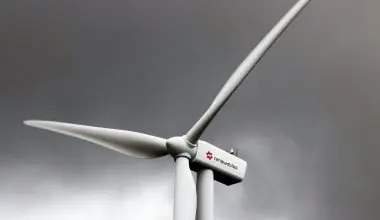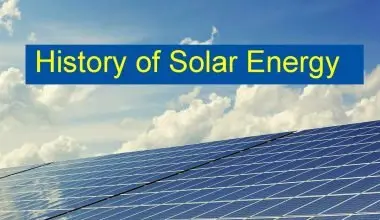Nuclear energy has now been used for years to generate electricity. Whether you are a science student, an engineer, or just a curious mind, everyone loves to know and talk about Nuclear energy due to its fascination. Although Nuclear energy has its advantages, it also has some devastating disadvantages such as the massive radioactive waste it can generate and its ability to be used in warfare.
Here are 20 interesting facts about Nuclear Energy:
1. Uranium is naturally available in the earth’s crust: The most commonly used element in fission reactions is Uranium, which is widely available in the earth’s crust. It consists of two Isotopes Uranium-235 and Uranium-238. Originally Uranium was used in decorative glass to add shade of Green and yellow before its use in generating energy came into light.
2. Energy Density: For all those who don’t know what energy density is, it’s the amount of energy stored in a substance per unit volume and Uranium has the highest energy density of all matter. Uranium has an energy density of 80 Million MJ/Kg, to put things into perspective Coal has an energy density of 25-30 MJ/Kg and Petrol has an energy density of 40-50 MJ/Kg.
3. Kazakhstan: The largest Uranium producing country in the world is Kazakhstan. Along with Kazakhstan, Canada and Australia make up two thirds of the world’s production on Uranium.
4. McArthur River, Canada: This is currently the world’s largest producing mine. It produced an estimated 13% of the world’s Uranium and is also regarded as the world’s largest high grade Uranium deposit.
5. Kazatomprom: A resource extraction company which is currently the world’s largest producer and supplier of natural Uranium. Headquartered in Astana, Kazakhstan, it claims to have the largest reserve in the industry as well.
6. High Temperature Resistance of Uranium: Uranium has a very high melting and boiling point. It melts at 1,132.3ᵒC (2,070.1ᵒF) and its boiling point is about 3,818ᵒC (6,904ᵒF).
7. The main Nuclear Power exporter: France is able to produce so much electrical energy from Nuclear Reaction that it is able to export to other various European Countries. Countries such as Belgium, Switzerland, Spain, Italy and the United Kingdom. France is the second largest producer of electricity from the nuclear energy.
8. Need for Nuclear Energy to power electric cars: Electric cars are built with the aim of promoting an eco-friendly environment, however, If a transition to electric cars is to be done, more nuclear energy will be required as the current renewable energy resources are unable to meet the demands of producing electricity for the electric cars.
9. Climate-Friendly Nuclear Energy: Nuclear energy emits three times less greenhouses gases than Solar Energy and emits almost the same amount of greenhouse gases as wind, water and Biomass energy. This makes Nuclear Energy a very viable Eco-friendly option for generating energy.
10. Energy trapped within atoms: Energy is released through the process of nuclear fission either through radioactive decay or under controlled conditions in a lab. Upon splitting of two atoms from one, nuclear energy is harnessed. This process is done under controlled conditions whereas the nuclear weapons undergo uncontrolled fission reactions.
11. Ionizing radiation discovery: Upon passing electrical current through a glass tube, in 1895, Wilhelm Rontgen was able to produce continuous ionizing radiation.
12. Use in Medicine: Nuclear energy is used in radiation therapy in patients suffering from Cancers. Radiation is used to treat a cancer by shrinking the tumor and to kill malignant cells. It may be used post-operatively to prevent recurrence after the primary tumor has been removed.
13. Nuclear Agriculture: It has been used to produce new stains of seeds are created to produce high yield crops and create seeds which are disease resistant. These seeds can be used to provide food for the millions of people suffering from malnutrion throughout the world.
14. Powering Apollo Missions: Plutonium can produce constant heat energy and doesn’t produce any radioactive emission that may harm the people or damage the space craft. Hence, it has been used to power multiple Apollo missions to the moon, numerous probes beyond our solar system and Galileo’s discovery Journey to the Jupiter.
15. Maintenance: Around every 2 years, a nuclear power plant needs to shut down operations to get rid of its spent uranium fuel, which becomes radioactive waste.
16. Electric supply in the U.S: Almost one-fifth (20%) of electricity produced in the United States comes from Nuclear power plants.
17. Extraction of Water from Rivers: Nuclear power plants need thousands of gallons of water to produce steam or to cool down machinery. The extraction of such quantities of water could severely damage aquatic life, especially in rivers or lakes.
18. Water Pollution: A related environmental issue is that there have been cases where the radioactive waste has been released into the open bodies of water which has turned out to be quite damaging for the environment.
19. Emission-free supply of energy: As I told you how 20% of total electricity in the U.S is supplied by the nuclear power plants, it is also responsible for 70% of the emission-free supply of energy.
20. Reliable Supply of Energy: Nuclear energy has a reliable supply of energy and therefore not subjected to immediate fluctuations in prices.


